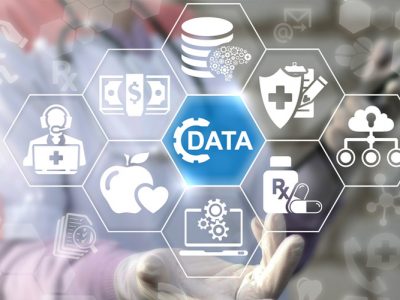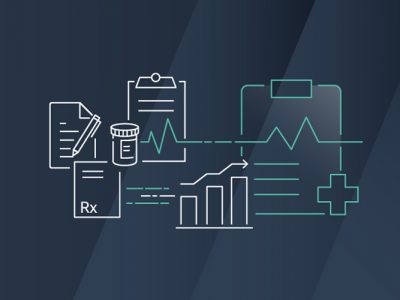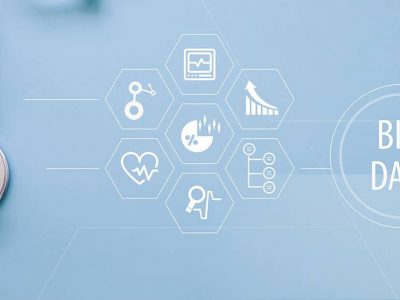
Big data’s goal is to use data-driven conclusions to not only predict and address problems, but also to keep them from growing too large to handle
Researchers, hospitals, and physicians are looking to a broad network of healthcare data to better understand clinical context, avert future health risks, and perhaps unearth innovative treatment possibilities. While data analytics is being used in a number of ways to enhance healthcare, we’ve produced a list of five areas where big data is solving some of the industry’s most serious concerns, along with a few examples of corporations and organisations that are working in each area.
Internet of medical things
In comparison to other businesses, the healthcare industry has been slow to react to the big data trend. As a result, the use of big data in healthcare is still in its infancy. Healthcare and biomedical big data, for example, have yet to intersect to improve healthcare data with molecular pathology. This kind of convergence can aid in the deciphering of numerous mechanisms of action or other areas of predictive biology. As a result, biomolecular and clinical records must be combined in order to estimate an individual’s health condition.
Clinical analytics and decision support
Healthcare practitioners want to make the best decision for their patients, and they frequently require assistance in doing so. Because the great majority of providers have implemented electronic health records, they now have access to the fundamental big data that will enable them to engage in clinical analytics. Data analytics can be patient-focused, such as comparing a diabetic individual’s HbA1C readings over the last two years to benchmark data from other non-diabetic patients, using algorithms to create risk scores for post-surgical infections.
Quality reporting
Clinical analytics is inextricably linked to quality reporting and provider performance benchmarking. It’s critical for providers to understand where the weak links in the quality chain are in the age of value-based care, financial performance penalties, and accountable care organisations. Many stakeholders are concerned about the recent growth of performance indicators and clinical quality measurements because of the time and effort required to report on them. Big data, on the other hand, has played a critical role in improving patient safety, demonstrating progress toward lowering healthcare costs, and coordinating treatment across diverse systems.
Population health management and patient management
Population health management is a mix of clinical and operational analytics that uses risk stratification and grouping strategies to identify individuals who require specialised care. Vendors have been investing their resources into developing technological solutions to help providers as they adopt this new way of thinking. Population health is regarded as one of the core abilities for involvement in accountable care organisations and the value-based environment.
Enhancing patient engagement
Many clients – and hence potential patients – are already interested in smart devices that continuously monitor their steps, heart rate, sleeping habits, and other data. Chronic insomnia, for example, in combination with a faster heart rate, may signal a higher risk of heart disease in the future. Another alternative is to use newly created wearables that capture health data and transfer it to the cloud, where physicians can monitor it.
Health tracking
Big data analytics, in conjunction with the internet of medical things, is transforming the way statistics and vitals are tracked. Aside from simple wearables that can monitor a patient’s health, there are more advanced wearables on the market. New medical advances can monitor a patient’s blood pressure, oxygen levels, and other vital signs. Continuous monitoring of body vitals combined with sensor data collecting will help healthcare organisations to keep individuals out of the hospital since they will be able to recognise possible health issues and treat them before they become worse.
Assisting high-risk patients
If all hospital records are digitalized, it will be the ideal data set from which to deduce patterns in a large number of patients. It may recognise patients who come to the hospital on a regular basis and grasp their chronic problems. Such knowledge would aid in providing better treatment to such patients and offer insight into remedial strategies to lessen their frequent visits.
Medical imaging
Big data analytics for healthcare, according to Carestream, might revolutionise the way photos are read: algorithms built via the analysis of hundreds of thousands of photographs could find patterns in the pixels and convert them to a number that would aid the physician in diagnosis. They even believe that radiologists may not need to look at photos in the future, instead of analysing the output of programs that will study and memorise many more images than they could ever remember in their lives.
Developing new therapies and innovations
The next explanation of healthcare analytics focuses on working toward a more promising and daring future in medicine. In healthcare, big data analysis has the potential to contribute to the discovery of new cures and medications. By integrating historical, real-time, and predicted data, as well as a cohesive blend of data visualisation tools, healthcare experts may uncover potential strengths and flaws in trials or procedures.
Apache Spark
Apache Spark is another open-source Hadoop replacement. It’s a distributed data processing engine that provides higher-level libraries for SQL queries, streaming data (Spark Streaming), machine learning, and graph analysis. Because the programming interface needs less coding work and can be effortlessly coupled to generate more sorts of sophisticated computations, these libraries help developers be more productive.



















